After spending the afternoon vacuuming and backwashing your pool you notice dirt coming back out through the jets starting to settle at the bottom of the pool. And if you’re like most people, it’s pretty frustrating.
Reasons why dirt might return to your pool through the jets during vacuuming or after backwashing include not rinsing after backwashing, a damaged spider gasket, damaged filter or the pool pump being too large for the filter.
Figuring out what reason might be for causing dirt to return to your pool isn’t very difficult, is usually a simple fix, and is easily preventable from happening again.
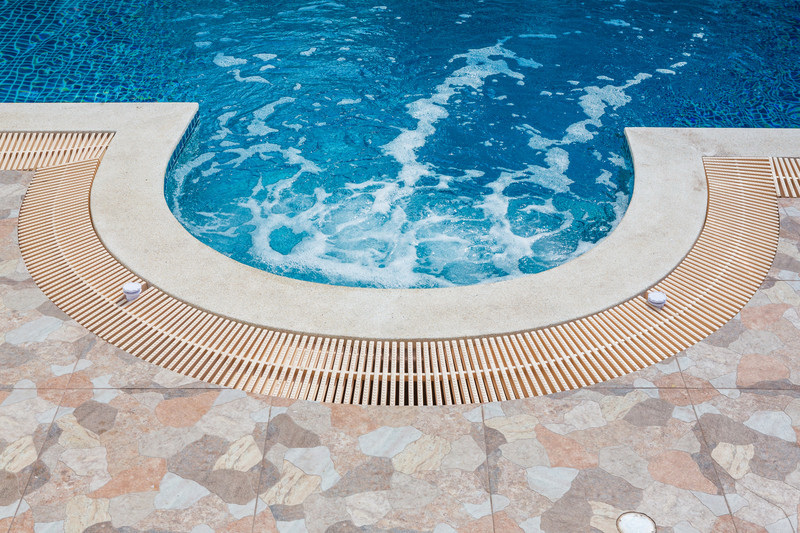
Article Contents
Why Is Dirt Coming Out Pool Jets?
If dirt is returning to your pool through the return jets (sometimes known as eyeballs), this is another sign that something in your pool’s system is wrong.
It can be an indicator of broken laterals (in a sand filter) or that the filter needs backwashing. It’s crucial to understand the importance of backwashing, especially after rinsing.
1. Not Rinsing After Backwashing
When you’re cleaning your pool’s filter, there is an order of settings to use to get maximum cleanliness.
One of the last few steps is backwashing. This setting reverses the flow of water through the filter. Doing this helps remove stubborn dirt and clean the filter from the Waste side.
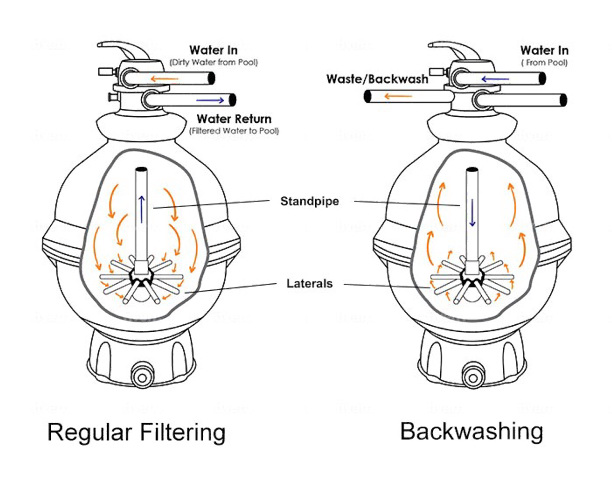
Seeing as backwashing pushes the water back through the multiport valve, you need to select the “Rinse” setting afterwards to clean it out in the normal direction. Not rinsing after backwashing is the most common mistake made by pool owners.
Without rinsing after backwashing, your pool will be moving a small amount of dirty water, dirt or sand back into the pool itself.
Confused on what all the setting on the multiport valve do? Click here to understand all you need to know about multiport valves.
2. Damaged Spider Gasket
The spider gasket is found in the multiport valve. It is responsible for sealing the multiport valve and helping divert the water flow seamlessly through the right port.
A damaged spider gasket, as shown in the image above, could cause dirt to come back out of your pool's jets.
Spider gaskets seal the different chambers inside your multiport valve and direct the water flow. But if it is damaged or misplaced, it may not create a tight seal.
You’ll be able to identify if your pool’s spider gasket is damaged, cracked, or misplaced easily. Opening the multiport valve during your routine pool maintenance check is the simplest way to find any issues with the gasket.
Here’s how to fix your spider gasket:
How to Replace a Spider Gasket in Multiport Valve
Spider gaskets are commonly damaged when someone moves the multiport handle while the pump is still running. Luckily, spider gaskets should last for 5-10 years and they aren’t very expensive or difficult to replace if damaged.
If you suspect the spider gasket is a problem, you can get a new one here.
- Fixes leaks, low pressure & backwash issues
- Range of seals suitable for all filters
- Cheap & simple to replace
3. Damaged Multiport Valve
The multiport valve is one of the key elements of your pool’s filtration system, only surpassed by the pump and filter itself. A damaged or cracked valve is identified by dirt returning to the pool as well as leakages from the valve itself.
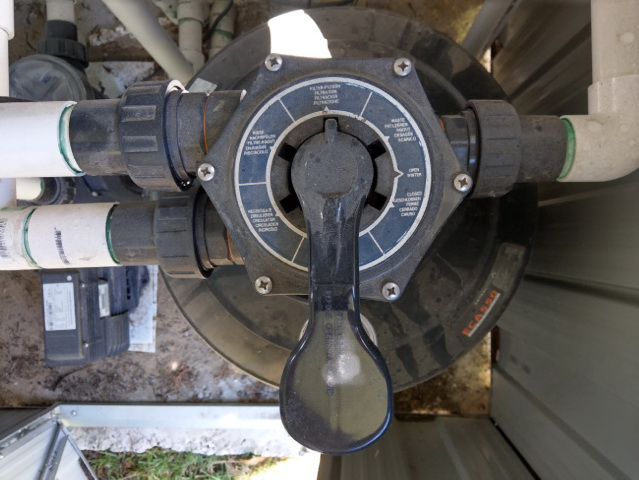
A faulty valve stops the correct flow of water through each port, including the filter. Water could bypass the filter and circulate back into the main pool,.
Your pool’s multiport valve can be become damaged if other internal components aren’t properly maintained or repaired in a timely manner. Faulty inner elements will put more pressure and strain on the entire valve leading to complete failure.
Depending on where the damage or crack is will depend on how easy it is to fix. It may be as simple as cleaning it by dismantling, or needing a new multiport valve altogether. Grab a new multiport valve here:
- Valves to suit all filters
- Fix all multiport valve problems
- Saver time & money with a replacement
4. Broken Laterals or Broken Standpipe
Laterals in a sand filter are the extension bars within the filter itself. There are usually 10 or so bars extending out in a wagon wheel design. They have tiny holes on the top of each bar that allow clean water through them while keeping dirt and sand in the filter.
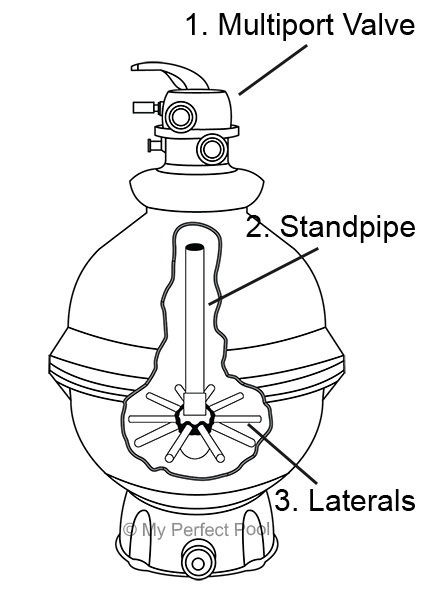
The standpipe is a key component in the sand filter and feeds the water to and from the laterals. It is the central pipe connected to the laterals.
If either of these components is cracked, sand and dirt may flow back into the pool through the return jets.
Laterals may break if the sand filter level is too high, causing the sand to overflow into the bars. This is usually identified by sand exiting those tiny lateral holes.
Both the laterals and standpipe may break from the pressure of the sand and from regular wear and tear over time. They aren’t a difficult fix and replacing the sand substrate might help as well.
5. Damaged DE Grid
Aside from sand and cartridge filters, you can use a diatomaceous earth (DE) filter with your pool. These filters tend to sift out more minute dirt than sand or cartridge filters.
The DE grid can become damaged if too much dirt gets compacted in it. This adds to the weight of the residual DE powder which causes the grids to collapse. This will lead to a knock-on effect of the inner structural plastic breaking or cracking the manifold.
If there is a whole in the filter grid, this will leave dirt to pass through the filter instead of being caught up. If it passed through and is not filtered out, it will go straight back into your pool through the return jets.
Checking the filter every time you carry out your routine pool maintenance will help stop this dirt building up. It’s also advised to take apart the DE filter to thoroughly clean it once a year.
6. Worn O-Ring Seals
The handle of the multiport valve is connected to the stem which holds two o-ring seals. These o-ring seals stop the water from going past them. If you notice water leaking around the handle as well as dirt returning to your pool, o-ring valves are probably the culprit.
O-rings can wear out, dry out, or lose their lubrication over time. During winter months, they can shrink with the cold temperature resulting in loosening of the seal’s capabilities to keep the valve airtight.
Replacing the defective o-ring seal or repositioning it might be the trick to fixing the issue. Make sure to only use silicone-based lube because it won’t wear out and dry as easily as water-based ones.
- Extends the life of rubber seals
- Creates a better seal & stops leaks
- Suitable for pools, spas, autos, RVs, boats, plumbing
7. Old Sand
Sand filters are easy to maintain and easily serviceable. Although the sand can last 5-7 years, depending on usage, it usually lasts 3-5 years. Not changing the old sand for new after this time will reduce its filtering performance.
Consequently, it may be moving dirt back into the pool. Replacing sand is relatively inexpensive and simply done. All you need to do is follow the manufacturer’s instructions and wear a protective face covering when dealing with the sand.
- Standard #20 grade for sand filters
- Helps prevent clogging & channeling
- 100% natural & chemical free
8. Pool Pump Is Too Big for Filter
Some pool owners accidentally purchase a pool pump that is too powerful for their sand filter. Or they purchase a more powerful one thinking the higher the horsepower of a pool pump means better filtration capabilities.
If the pump is too powerful, it will force the water through the filter too quickly. In a sand filter, this can create channels of high flowing water which gives dirt the space to pass through. The velocity of the water may damage the filter itself and potentially other internal components too.
This is why calculating what size pool pump your pool needs is crucial in helping prevent issues going forward. Need help understanding what size your pool needs? Click here to find what you need.
Tips To Prevent Dirt Going Back into The Pool
Nothing is worse than feeling the pride of a job well done drain away when dirt starts to settle in the bottom of your freshly cleaned pool. Being aware of the following tips and practices will keep both you and your pool happy.
Backwash Regularly
Getting into the habit of backwashing your filter as part of your routine pool service is one of the best things to prevent the build up of dirt. Backwash once a week for about 2-3 minutes for the best results.
Rinse After Backwashing
Along with creating a regular backwashing habit, it’s common practice to switch from the “backwashing” setting to “rinse” setting after 2-3 minutes of backwashing. This will correct the flow of water, rinsing out the filter, and flushing it out of the waste pipe and multiport valve. Leave the valve in this setting for 1-2 minutes for a sparkly clean filter.
Vacuum to Waste
It is advised to vacuum the pool to waste when there is a lot of algae build-up or when your pool is very dirty. This will send the dirty water out of your filter and down the drain or through the backwash hose instead of directing it through the filter.
Because this method drains the pool of water, it’s important to keep an eye on the water level so it doesn’t drain lower than the skimmer box. If this happens the pump will be starved for water and you’ll end up with air in your pump or filter.
If you have a cartridge filtration system, there won’t be a waste outlet. However, you can work around this by installing a 3-port valve between the filter outlet and pump outlet.
Always Turn Off Pump Changing Port Settings
Whenever you are dealing with the pool’s multiport valve, always turn off the pump before changing settings.
Forgetting to do this important step will reduce your pool filter’s performance. Not only will this return dirt back into your pool, but it can also damage the valve itself and other internal pool components.
Final Thoughts
Having dirt return to your pool is incredibly frustrating. Even though it can be because of a few different reasons, they are all easily fixed or replaceable.
Establishing good pool maintenance, along with these handy tips, will go a long way to help prevent dirt flowing back into the pool. Happy pool, happy owner.


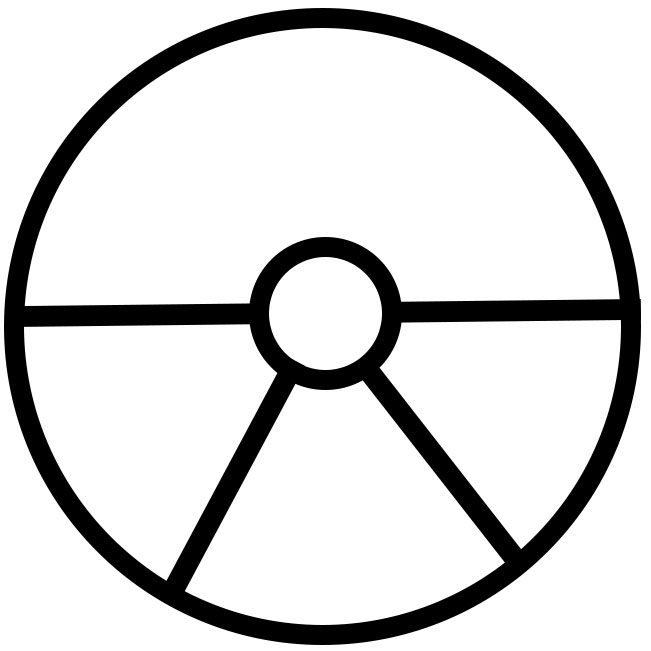
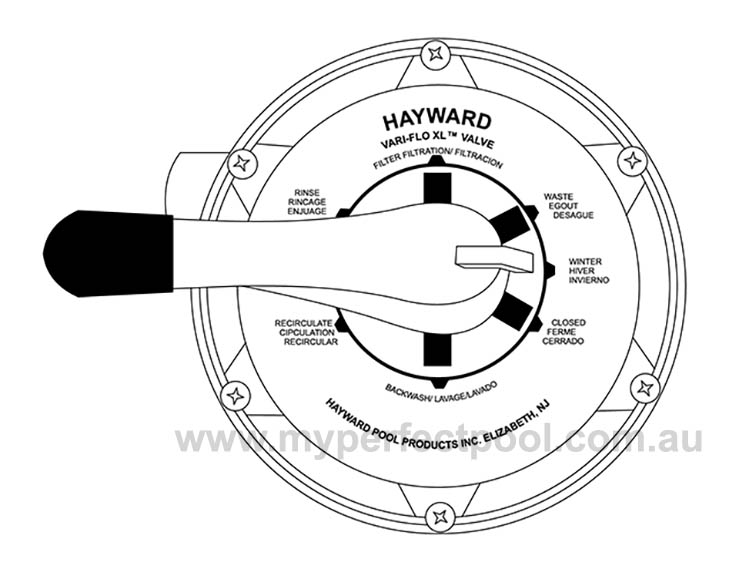




I have a de filter and I just replaced the grid (so there brand new) because I had de return to the pool while in the filter position. The pool was clean until I turned the pool on after putting in the new grids and the pool still has de settling on the bottom of my clear pool. I have to keep brushing the bottom. I need advise. It’s a bear to continue to clean the grids all the time.
It sounds like you’re having a frustrating issue with DE (diatomaceous earth) returning to your pool even after replacing the filter grids. Here are a few potential causes and solutions to consider:
1. Check for Installation Errors: Double-check that the new grids were installed correctly. Even a small misalignment can cause DE to bypass the filter and return to the pool.
2. Inspect Manifold and Gaskets: Ensure that the manifold (the part that holds the grids together) and all gaskets or o-rings are intact and properly seated. Any damage or improper seating can allow DE to escape.
3. Check the Multiport Valve: If your DE filter uses a multiport valve, inspect it for issues. A malfunctioning valve can cause DE to return to the pool. Make sure it’s set correctly and all internal parts are intact.
4. Amount of DE Added: Ensure you’re adding the correct amount of DE. Too much or too little can cause issues. Follow the manufacturer’s recommendations for your specific filter model.
5. Filter Backwashing: After replacing the grids, it’s a good practice to backwash the filter to ensure everything is seated properly and any residual DE is cleared out.
If you’ve checked all these areas and the problem persists, you might want to consult with a pool professional. They can inspect your system more thoroughly and identify any less obvious issues.
BRILLIANT HELP AND PROFESSIONALISM….THANKS A MILLION
BOB